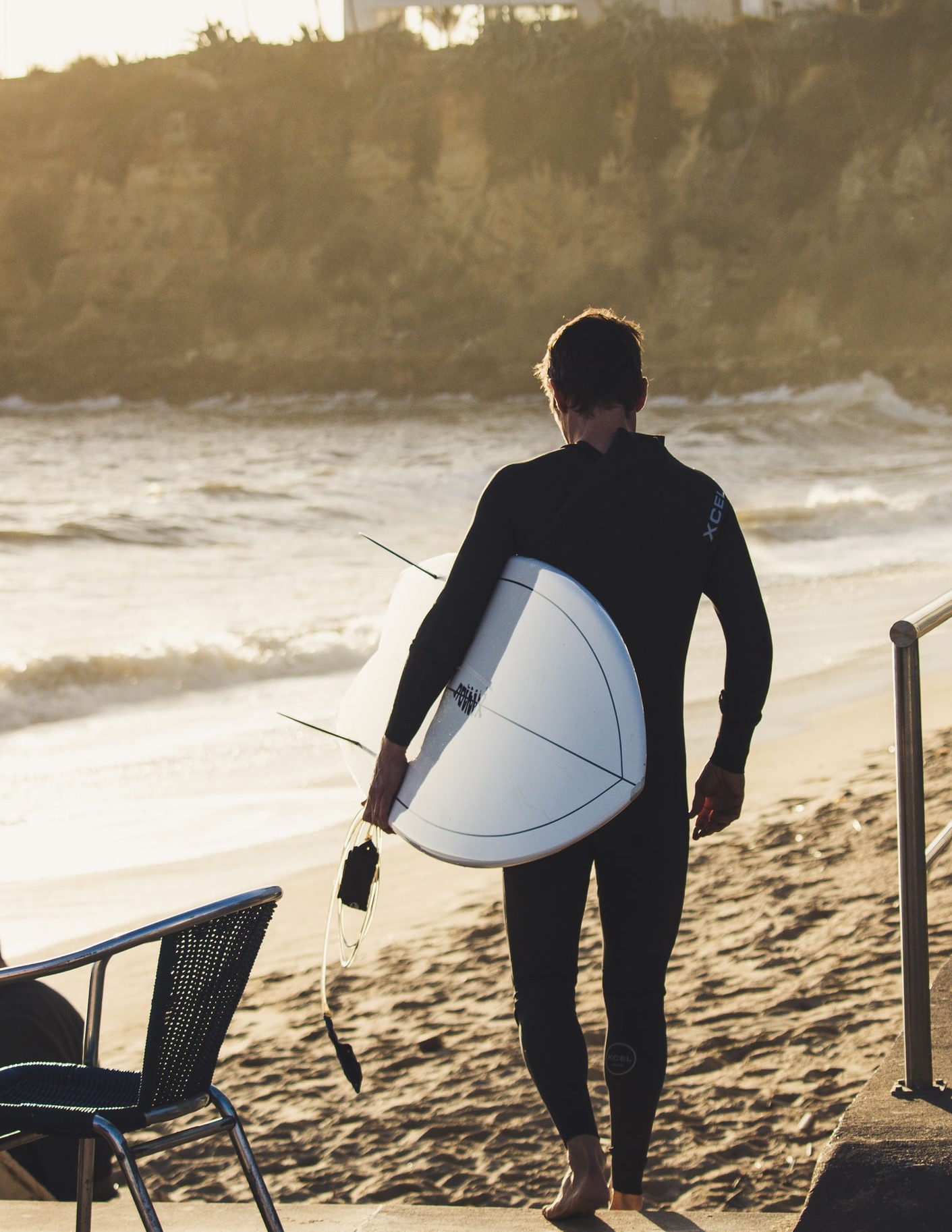Just like the endless possibilities of surfboard shape and materials, the fins you choose to use will affect your ride, depending on their size, shape, material, and opposition.
Twin fins, becoming popular in the early 1980s, were found to provide extra maneuverability and speed when compared to the then-popular single fin boards.
Below we will discuss surfboard fin set up in detail, with a concentration on twin fins, when to use them, their pros and cons, and whether they are right for you.
- Does the Fin Setup Really Matter?
- What Is the Difference Between a Twin Fin and Thruster?
- What Are the Advantages of 2 Fins?
- What Are the Disadvantages of Twin Fins?
- Are Twin Fins Faster Than Other Fin Setups?
- Are Twin Fins Hard to Surf?
- Can You Surf With a Missing Fin?
- Choosing the Correct Fin Setup
- Can I Use Twin Fins on a Longboard?
- How Many Fins Should a Surfboard Have?
- Are Twin Fins Good For Beginner Surfers?
- Conclusion
- You Might Also Like…
Does the Fin Setup Really Matter?
Just as different tires on a car make a difference to speed and control, so does the fin setup on a surfboard.
Generally speaking, a fin near the back and center of your board will provide more control, but slow you down due to drag, while shorter fins towards the edge of a surfboard will create more maneuverability and generate more speed.
The further forward your fin setup, the less stable you will feel while experiencing little effort to make quick turns.
What Is the Difference Between a Twin Fin and Thruster?
Simply put, a twin fin set up uses two fins, a thruster set up uses three.
On a twin fin set up, the fins are placed near the rails of each side of the board, slightly forward from the tail.
A thruster setup uses three fins of the same size, similar to that of the twin set up, but with an added centered tail fin.
What Are the Advantages of 2 Fins?
1. Added Speed: Because of the lack of a center fin, twin fin setups tend to be faster than single fins or a three fin set up.
2. Agility: With the lack of a center fin, your board will tend to slide more. Although this is sometimes a disadvantage, it will add to your agility.
Twin fins make it easier to make sharp and quick turns as there is less drag in the water.
3. Stability: Twin fin setups, usually found on fish boards, tend to be wider at the tail. A wider tail provides added stability when standing on your surfboard.
The fins also add stability due to their positioning on rails of the board. As the fins push the water outwards, it creates less wobble on the board.
4. A larger variety of waves: Twin fins, due to their stability, agility, and speed capabilities, are suited for a larger variety of waves.
Surfing a twin fin can allow you to surf waves like on a longboard, with all of the agility and maneuverability of a shortboard.
What Are the Disadvantages of Twin Fins?
1. The board may feel loose: Although twin fins are more stable due to their width, they tend to feel loose when riding.
The center fin on a single fin or three fin setup helps to keep the board centered, much the same as a centerboard on a boat.
Without this center fin, your board can feel difficult to control, especially when making sharp bottom turns.
2. Lack of stability on larger waves: On smaller waves, the width of a twin fin can add stability, but on large waves, the lack of the center fin can make maintaining control of your board difficult.
Because of the extreme speed generated on large waves, twin fins can be tricky to control (expect the board to slide when turning).
3. Difficulty duck diving: Although this is likely not an issue for the more advanced surfer, when new to duck diving, using a twin fin can be more difficult.
This is less due to the fins and more because of the style of board that is usually used for the fin setup.
That being said, when duck diving with a twin fin set up, you may find the tail of your board slipping out from under you while under the water.
Are Twin Fins Faster Than Other Fin Setups?
Twin fins are possibly the fastest fin set up. This is directly related to the lack of the center fin.
In short, no center fin = more speed.
The only alternative to this is the four fin set up, which is also faster than any set up with a center fin, but more stable than a twin fin.
The only difference between a four and two fin setup is that due to the extra two fins on a four fin board, slightly more drag is expected.
Are Twin Fins Hard to Surf?
As with most things in the surfing world, different people have different opinions when it comes to equipment, wave shape, and weather conditions.
If you learned to surf on a twin fin, it is likely that you will not notice any added difficulty.
However, moving from a single fin to a twin fin can be a tricky change.
Most of the struggle will come with the lack of anchoring that the center fin would otherwise provide.
Furthermore, a twin fin setup is much more responsive than a single or three fin setup.
This can take some getting used to, but is not necessarily harder than other setups, it is just different.
Can You Surf With a Missing Fin?
It is very possible to surf with a missing fin. What is more important is why the fin is missing.
If you are missing a fin because it has broken off, then it is likely that there is some damage to your board.
Using a board in this condition can lead to it becoming waterlogged, and ultimately the demise of your beloved friend.
If the reason for a missing fin is simply that it has been lost, stolen, or forgotten at home, this will not be a problem.
Assuming that you are using a board with removable fins, with a three fin board, you can either remove another fin and place a single one at the tail, or use a twin fin setup.
If you find yourself in the case of using a board such as a fish, where there are only two fin boxes, then surfing with a single fin can still work.
This will of course increase the amount of slide your board has.
In this case, you should put the fin on the side of your board that will be closest to the wave when you make a turn.
This setup will make turning into the wave easier.
Can You Surf With 2 Fins on a 3 Fin Board?
The advantage of having removable fins on a three fin board is that you ultimately have three different fin set up possibilities:
- A single fin – In the center of the board
- Three fins – Using all the fin docks (one in the center, and a single fin on each side).
- Twin fins – A single fin on each side.
There is no reason why removing the center fin from your three fin board will cause a problem.
However, depending on your board shape, placing your foot near the back of the board, which now has no fin, can add extra slide.
Can You Surf With 2 Fins on a Quad Fin Board?
Just the same as it is with two fins on a three fin board, it is possible to surf with two fins on a four fin board.
When the two fins are placed further forward, and to the outside, you will experience more slide, but increased stability.
When the fin docks near the back and center are used, the board will slide less, but seem less stable.
Keep in mind that you should always use a fin on each side of the board, and in opposite docks (not one in the front and one behind it on the same side).
Can You Use a Surfboard Without Fins?
It is possible to surf on a surfboard with no fins.
Many people choose to do this as it can create an entirely new experience.
Without fins, your surfboard will slide in the water which makes 360° slides possible.
Although this is entertaining, surfing without fins is difficult, and only suited for smaller waves.
Choosing the Correct Fin Setup
Deciding on the fin set up that you need is often down to the experience you wish to have.
Of course in certain conditions, different setups will be better, but most of the time it comes down to the type of surf you are wanting to experience.
When Should I Use a Single Fin?
Although considered to be outdated, single fins are often found on longboards.
A single fin setup creates a different surfing style as it is not possible to make quick turns on these boards.
Because of this, slow gliding maneuvers are used and are best suited on smaller, smooth, and straight rides.
You can consider this the “laid back” fin set up, when simply cruising along a wave is all you want to do.
When Should I Surf With Twin Fins?
As twin fins create added control of your board and a more skateboarding type of feel, these setups are ideal for surf sessions when you wish to be more active, practice tricks, or make quick maneuvers.
Of course, this setup is not as versatile as a thruster setup but can provide a different experience.
When Should I Use More Than 2 Fins?
In most cases, a board with three fins (a thruster setup) is the most universal, and therefore most popular setup.
Using a thruster setup will provide the agility of a twin setup, with the added anchoring of a single fin.
As for more than three fins, a quad setup – similar to a twin fin – is faster but will slide more than a thruster setup (although less than a twin).
Five fin setups are available, however, all the docks will rarely be used at the same time.
The extra docks are for the options of different setups and not to be used with five fins at a time.
Generally speaking, if you are unsure of what fin setup to use, a three-fin thruster setup is “standard” and will work in all situations.
Can I Use Twin Fins on a Longboard?
It is possible to use twin fins on a longboard, although this is a very uncommon setup.
Due to the size of a longboard, twin fins will quickly be overcome by the forces and lead to a feeling like there are no fins at all.
Longboards are harder to control than short boards, which is why long single fins are so common with them.
Of course, you can try surfing your longboard with only two fins, just as you can surf with no fins, but it will be an interesting experience.
How Many Fins Should a Surfboard Have?
There is no specific answer to how many fins a surfboard should have, which you will likely now understand from all of the above.
Simply put, a surfboard is best with at least one center fin, and generally should not have more than four (although in some cases five fins are used).
As for what is the most common, a three fin setup will provide the best all-around experience.
Are Twin Fins Good For Beginner Surfers?
As one of the biggest challenges to a new surfer is learning how to stand up on your board, and stay standing, twin fins can make this more difficult.
Although, due to the steep learning curve that surfing entails, the learner may not notice the added challenge, using a three fin set up or a single fin longboard may be significantly easier.
That being said, there is no reason why you cannot learn to surf on a twin fin.
As mentioned before, the different setups simply take some getting used to.
Conclusion
Twin fin surfboard setups are common and can put a fun twist on your surf session.
Although they are not as common as a thruster setup, due to their “loose feeling” they provide more agility than a single fin.
Twin fins are ideal when you are looking for some extra speed, or want to have more maneuverability on the waves you would otherwise need a longboard to surf.
You Might Also Like…
-

Do Surfers Ride Switchfoot? 5 Benefits (& Why You Should Learn It)
-

Do Surfers Shave Their Legs? 5 Common Reasons (+Pros & Cons)
-

Do Surfers Wear Helmets? 8 Situations You Should Wear One (+4 Cons)
-

Do Surfers Poop in the Ocean? Myths & Facts (+5 Tips)
-
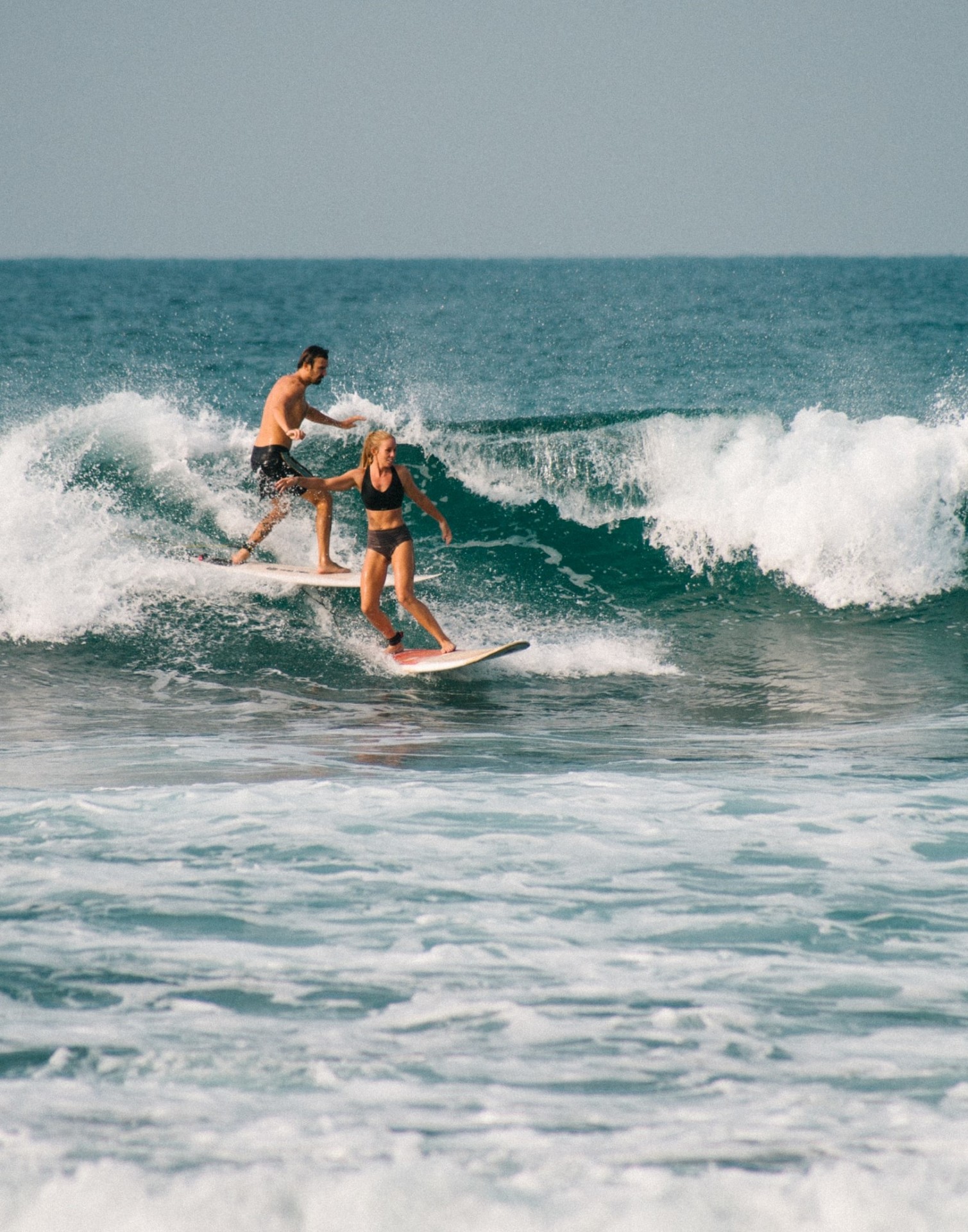
Do Surfers Run Into Each Other? 5 Common Reasons (+8 Tips)
-
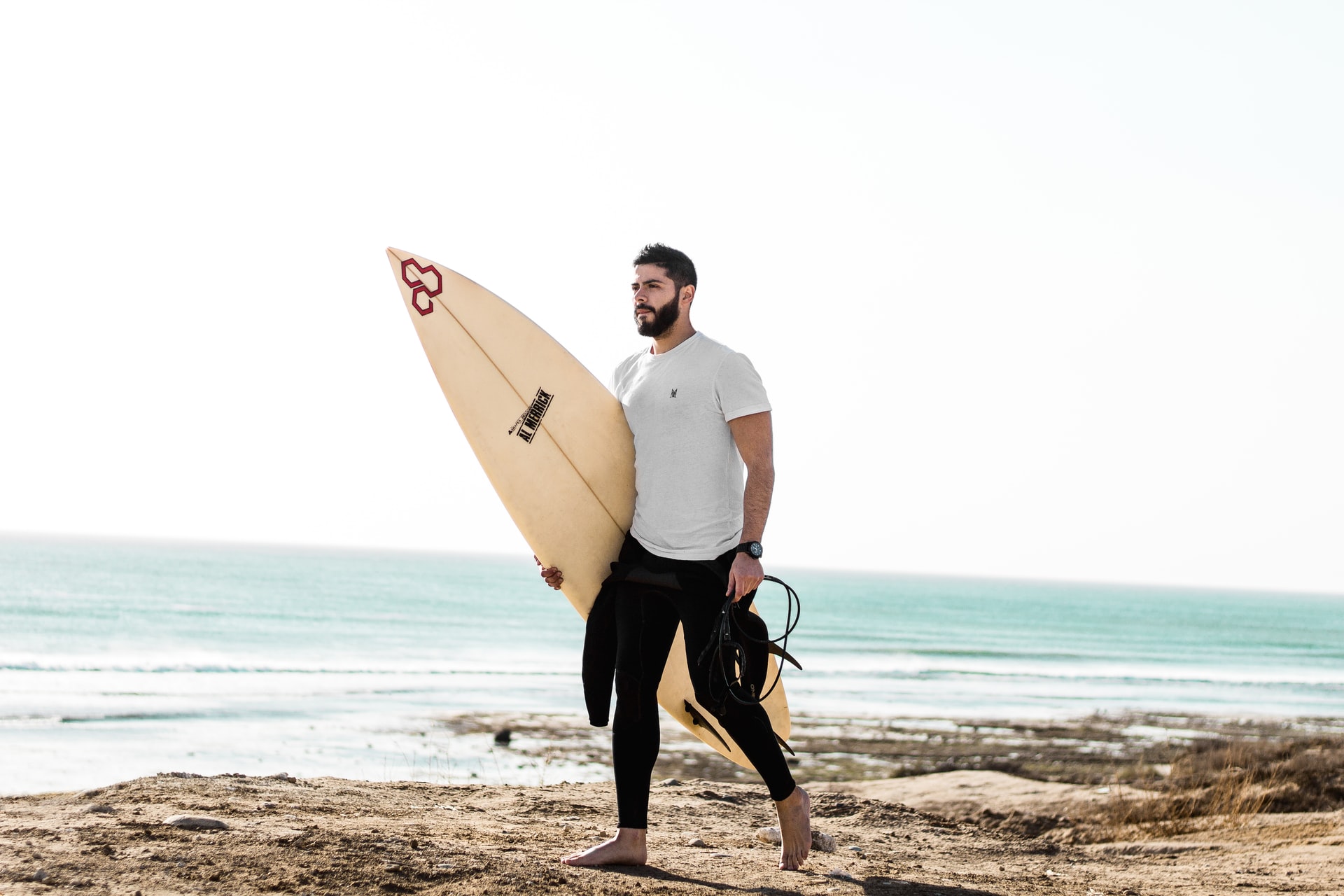
Do Surfers Have Beards? Pros & Cons You Should Know (+4 Tips)
-
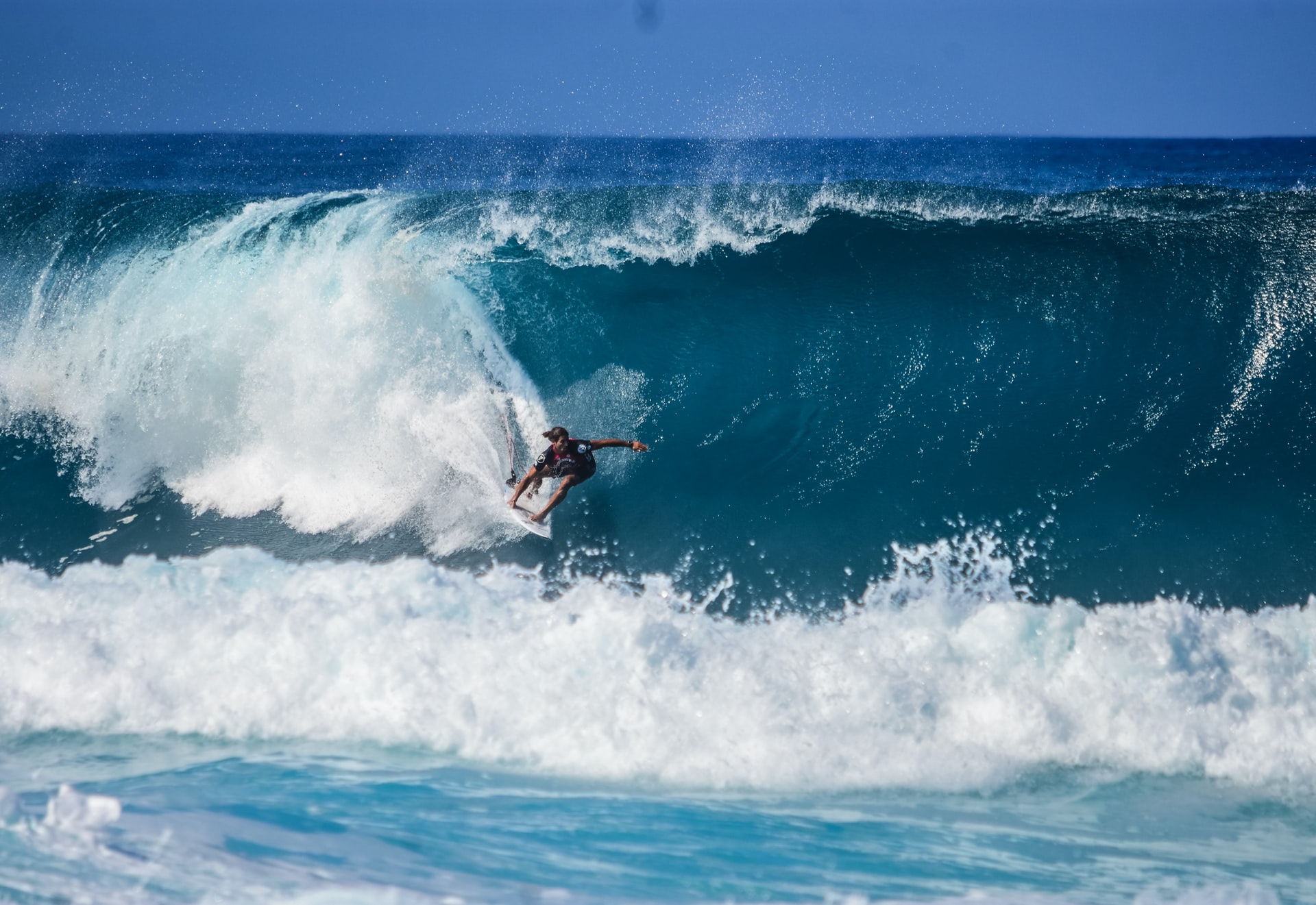
Do Surfers Like Constructive or Destructive Waves? (+Pros & Cons)
-
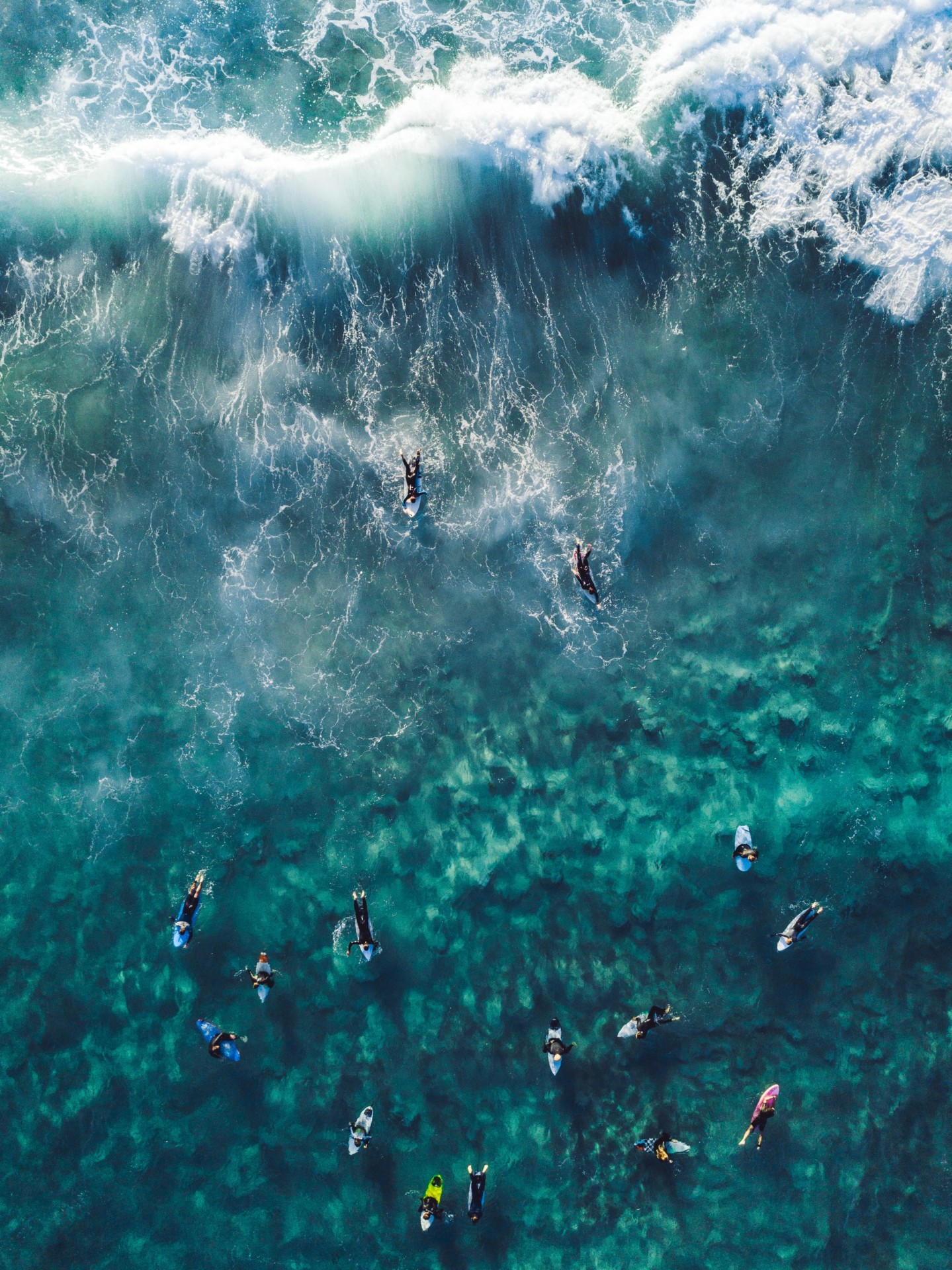
How to Surf Safely: 34 Crucial Tips (Every Surfer Should Know)
-
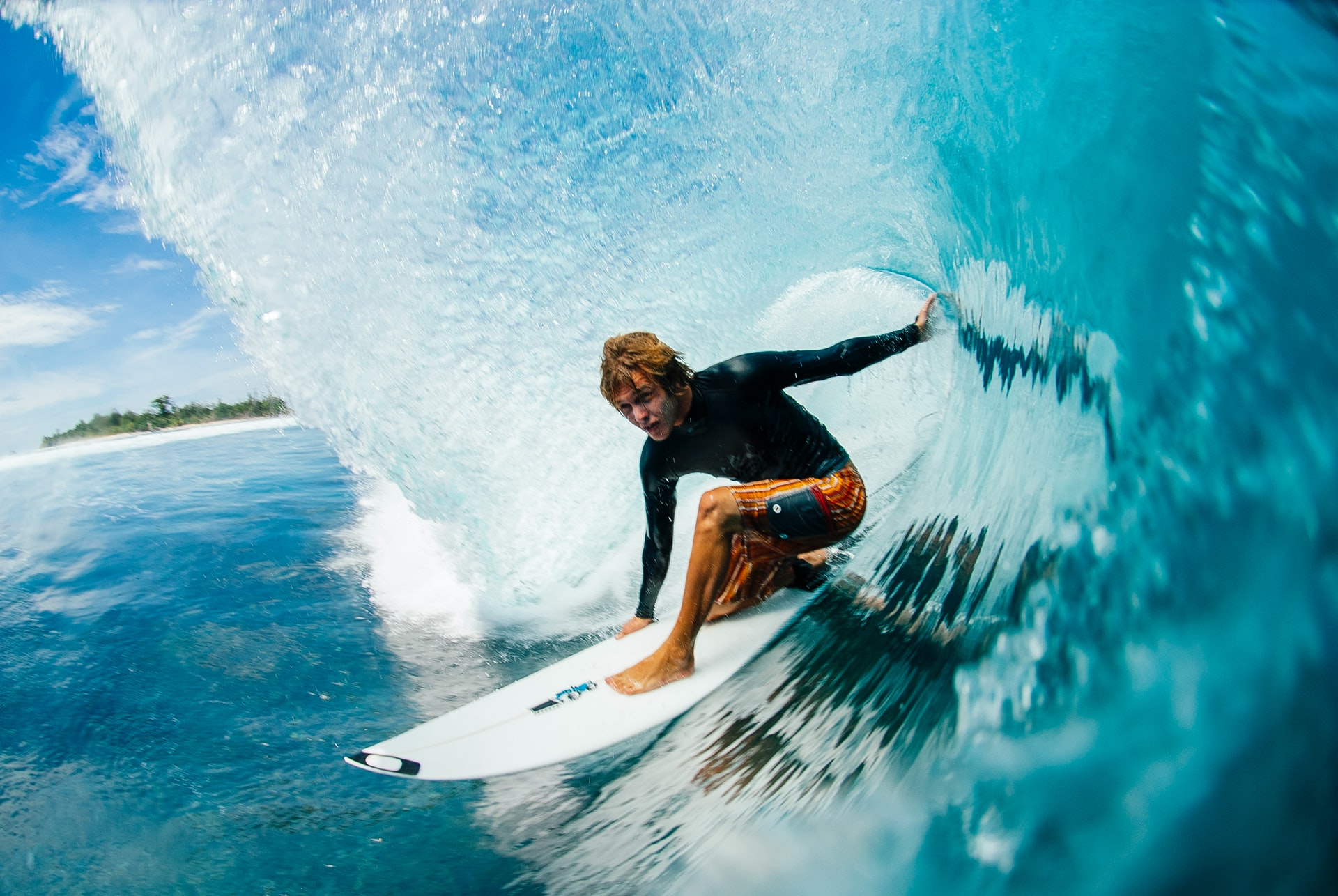
Do Pro Surfers Use Leashes? (+6 Reasons Why You Should Too)
-
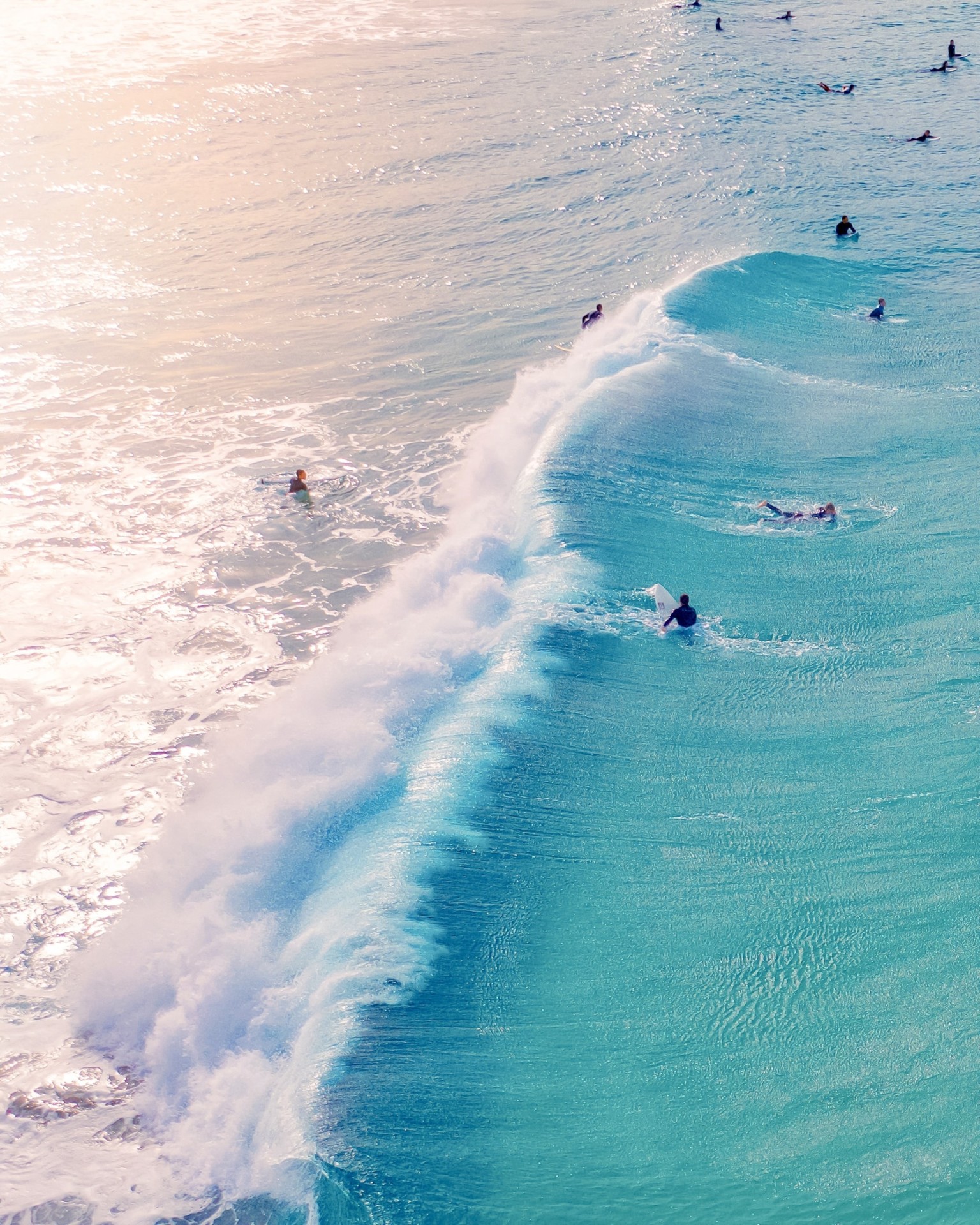
Do Many Surfers Drown? Here Are the Facts (+4 Common Reasons)
-
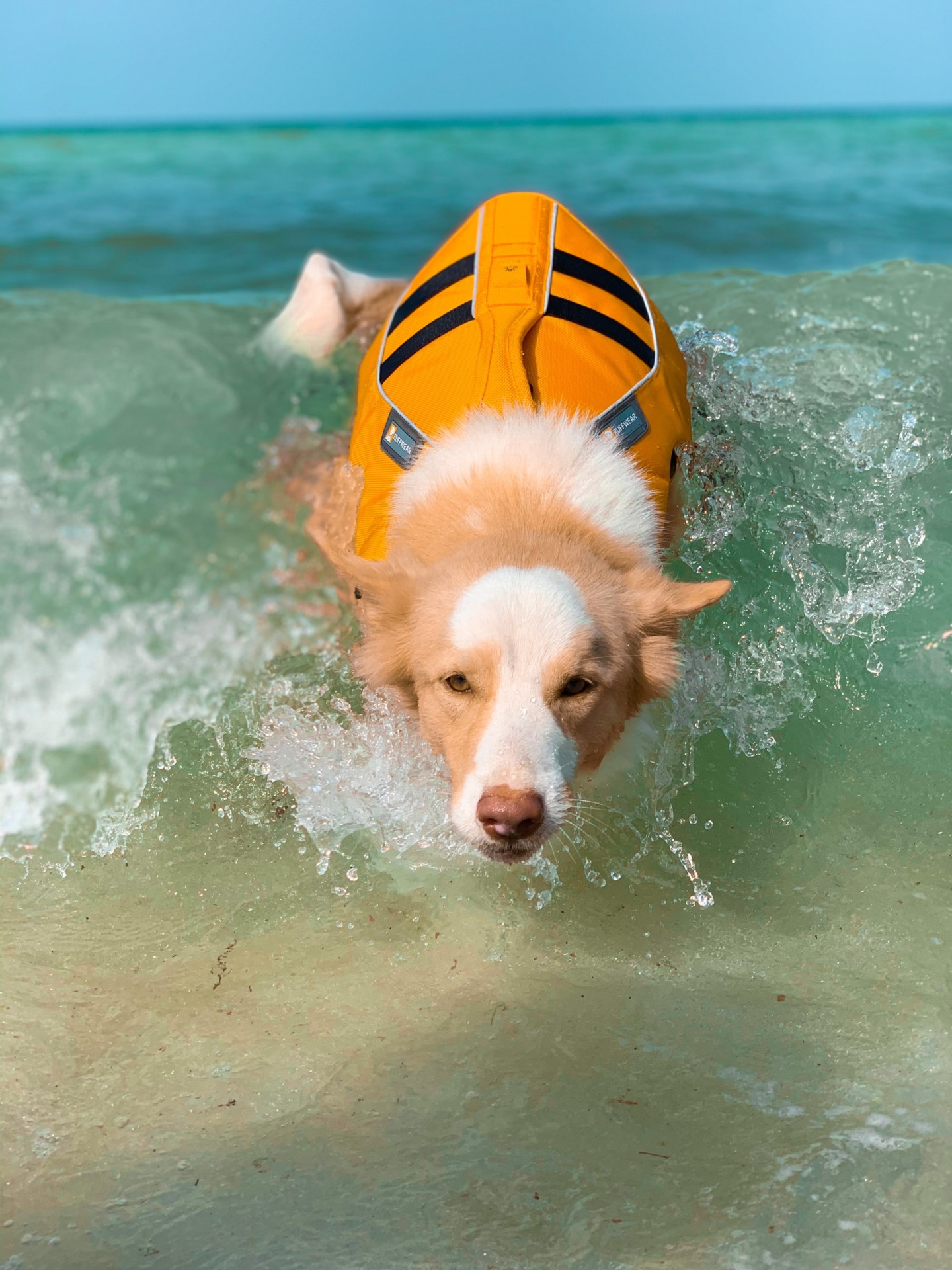
Do Surfers Wear Life Jackets? (7 Reasons Why They Don’t)
-
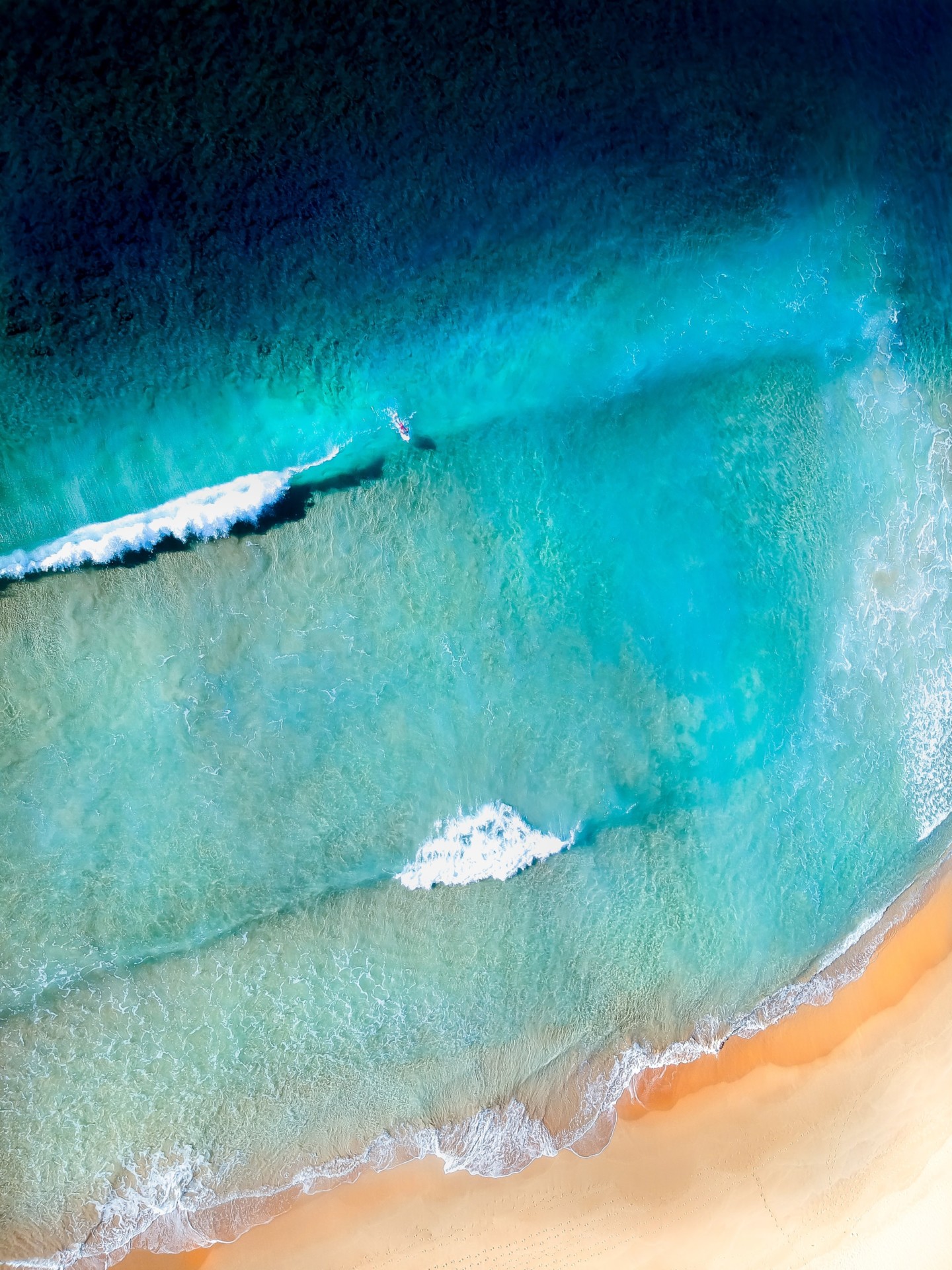
Do Surfers Like Rip Currents? (& How to Use Them Safely)

